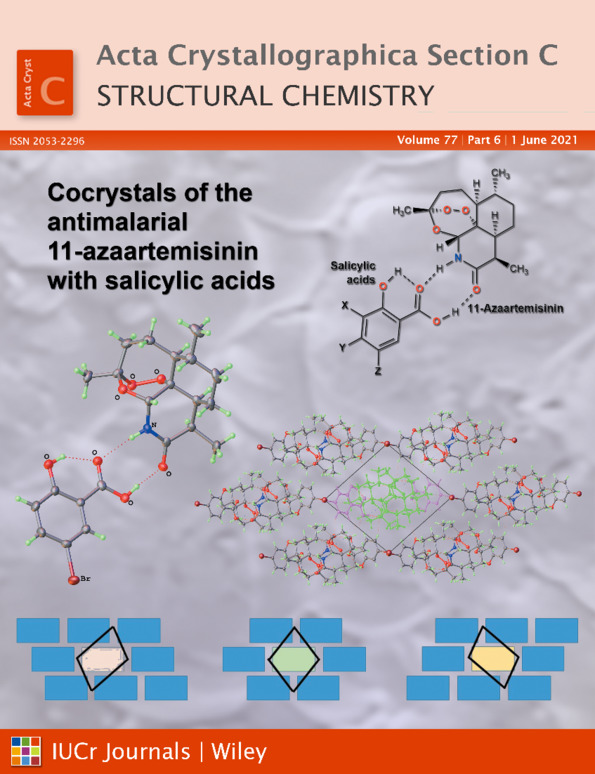Novel Ba2+ and Pb2+ metal–organic frameworks based on a semi-rigid tetracarboxylic acid: syntheses, structures, topologies and luminescence properties
Abstract
Multidentate carboxylate ligands have been widely used in the construction of metal–organic frameworks (MOFs) owing to the rich variety of their coordination modes, which can lead to crystalline products with interesting structures and properties. Two new main-group MOFs, namely, poly[[di-μ-aqua-diaqua(dimethylformamide)[μ7-5,5′-methylenebis(2,4,6-trimethylbenzene-1,3-dicarboxylato)]dibarium(II)] trihydrate], {[Ba2(C23H20O8)(C3H7NO)(H2O)4]·3H2O}n or {[Ba2(BTMIPA)(DMF)(H2O)4]·3H2O}n (1), and poly[[diaqua[μ6-5,5′-methylenebis(2,4,6-trimethylbenzene-1,3-dicarboxylato)]dilead(II)] 2.5-hydrate], {[Pb2(C23H20O8)(H2O)2]·2.5H2O}n or {[Pb2(BTMIPA)(H2O)2]·2.5H2O}n (2), were prepared by the self-assembly of metal salts with the semi-rigid tetracarboxylic acid ligand 5,5′-methylenebis(2,4,6-trimethylisophthalic acid) (H4BTMIPA). Both structures were characterized by elemental analysis (EA), single-crystal X-ray diffraction, powder X-ray diffraction (PXRD), IR spectroscopy and thermogravimetric analysis (TGA). Complex 1 reveals a three-dimensional (3D) flu network formed via bridging tetranuclear secondary building units (SBUs) and complex 2 displays a 3D framework with an sqp topology based on one-dimensional metal chains. The BTMIPA4− ligands adopt a rare coordination mode in 2, although the ligands in both 1 and 2 are X-shaped. The luminescence properties of both complexes were investigated in the solid state.




